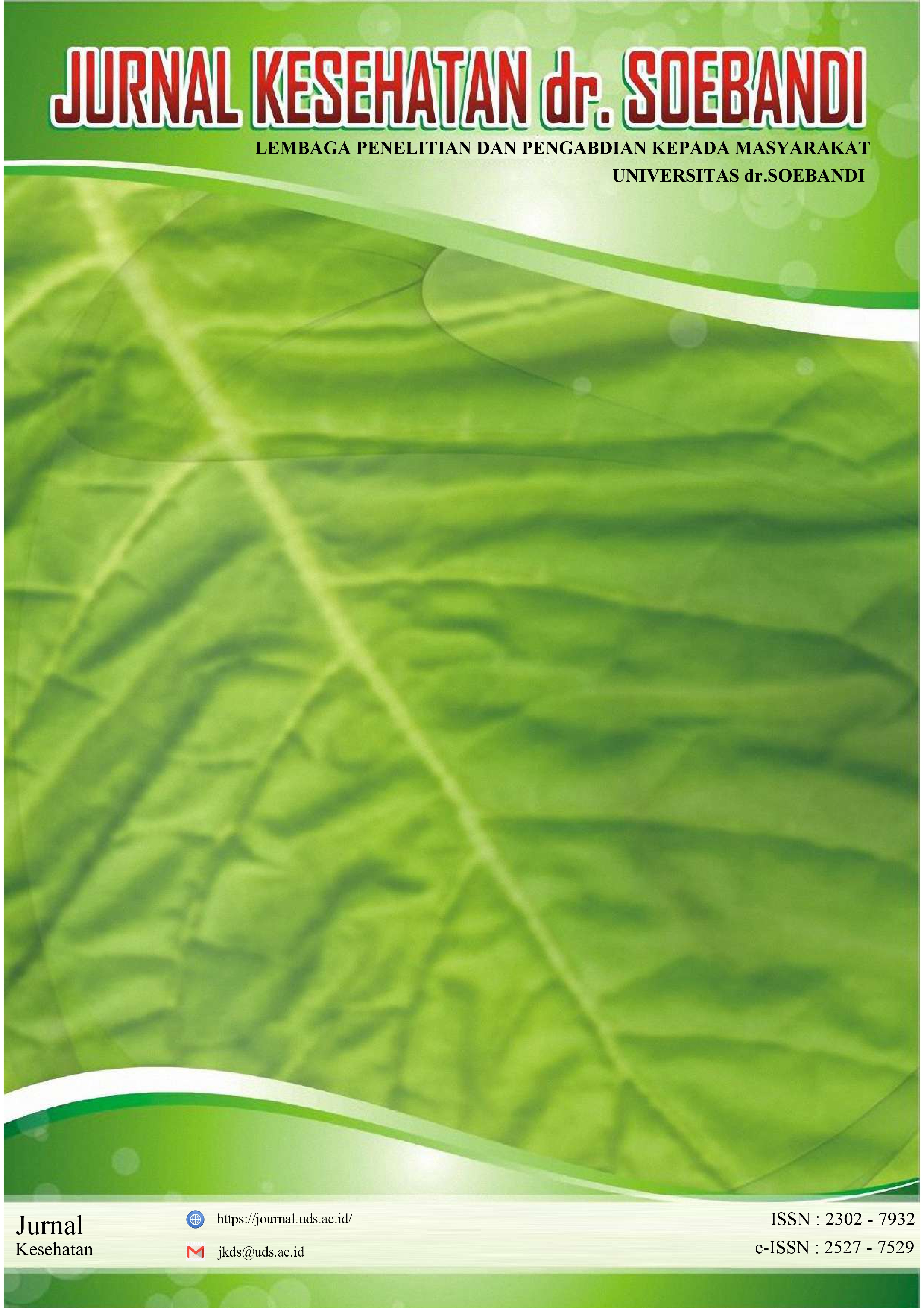 Jurnal Kesehatan dr. Soebandi (JKDS) is a national journal covering scientific studies in various health fields (Nursing, Midwifery, and Pharmacy). Jurnal Kesehatan dr. Soebandi is a scientific journal as a forum for academics and practitioners to present quantitative and qualitative scientific works.
Jurnal Kesehatan dr. Soebandi (JKDS) is a national journal covering scientific studies in various health fields (Nursing, Midwifery, and Pharmacy). Jurnal Kesehatan dr. Soebandi is a scientific journal as a forum for academics and practitioners to present quantitative and qualitative scientific works.
JKDS published by LPPM Universitas dr. Soebandi Jember. This journal was first published in October 2012 with two times publications in one year (April and October). Editors receive empirical research articles and studies in Nursing, Midwifery, and Pharmacy. It is hoped that the consistency and quality of scientific work can improve the quality of education in the future.
The purpose of Jurnal Kesehatan dr. Soebandi: Supporting the Development and Improvement of Health Degrees in theory and practice in Indonesia with integrated and critical research results. Articles submitted by the authors have not been published elsewhere (except in abstract form or as part of a published lecture, review, or thesis). They are not currently considered for publication elsewhere.
The author who submits it is responsible for ensuring that the publication of the article has been approved by all other authors. By the provisions, articles that have been previously published and are being considered for publication elsewhere cannot be accepted. If you want to ask about the cover and content please email us.
Journal Description
| Journal title | : Jurnal Kesehatan dr. Soebandi |
| Initials | : JKDS |
| Frequency | : 2 issues per year (April & October) |
| Prefiks DOI | : 10.36858 |
| Online ISSN | : 2527-7529 |
| Editor In Chief | : Hendra Dwi Cahyono |
| Publisher | : LPPM Universitas Dr. Soebandi |

 Sadewa : Jurnal Pengabdian Masyarakat is a scientific journal with the scope of community service carried out by lecturers, practitioners and students. The purpose of publishing this journal is to accommodate scientific writing that has the substance of community service activities which are downstream from the results of research or community service activities carried out based on an analysis of the community's needs for contributions from science and technology that can increase independence, standard of living and/or prosperity in various communities. aspects such as health.
Sadewa : Jurnal Pengabdian Masyarakat is a scientific journal with the scope of community service carried out by lecturers, practitioners and students. The purpose of publishing this journal is to accommodate scientific writing that has the substance of community service activities which are downstream from the results of research or community service activities carried out based on an analysis of the community's needs for contributions from science and technology that can increase independence, standard of living and/or prosperity in various communities. aspects such as health.